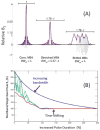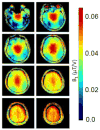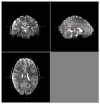Pushing spatial and temporal resolution for functional and diffusion MRI in the Human Connectome Project
- PMID: 23702417
- PMCID: PMC3740184
- DOI: 10.1016/j.neuroimage.2013.05.012
Pushing spatial and temporal resolution for functional and diffusion MRI in the Human Connectome Project
Abstract
The Human Connectome Project (HCP) relies primarily on three complementary magnetic resonance (MR) methods. These are: 1) resting state functional MR imaging (rfMRI) which uses correlations in the temporal fluctuations in an fMRI time series to deduce 'functional connectivity'; 2) diffusion imaging (dMRI), which provides the input for tractography algorithms used for the reconstruction of the complex axonal fiber architecture; and 3) task based fMRI (tfMRI), which is employed to identify functional parcellation in the human brain in order to assist analyses of data obtained with the first two methods. We describe technical improvements and optimization of these methods as well as instrumental choices that impact speed of acquisition of fMRI and dMRI images at 3T, leading to whole brain coverage with 2 mm isotropic resolution in 0.7 s for fMRI, and 1.25 mm isotropic resolution dMRI data for tractography analysis with three-fold reduction in total dMRI data acquisition time. Ongoing technical developments and optimization for acquisition of similar data at 7 T magnetic field are also presented, targeting higher spatial resolution, enhanced specificity of functional imaging signals, mitigation of the inhomogeneous radio frequency (RF) fields, and reduced power deposition. Results demonstrate that overall, these approaches represent a significant advance in MR imaging of the human brain to investigate brain function and structure.
Copyright © 2013 Elsevier Inc. All rights reserved.
Figures






















References
-
- Adriany G, Van de Moortele PF, Ritter J, Moeller S, Auerbach EJ, Akgun C, Snyder CJ, Vaughan T, Ugurbil K. A geometrically adjustable 16-channel transmit/receive transmission line array for improved RF efficiency and parallel imaging performance at 7 Tesla. Magn Reson Med. 2008;59:590–597. - PubMed
-
- Adriany G, Van de Moortele PF, Wiesinger F, Moeller S, Strupp JP, Andersen P, Snyder C, Zhang X, Chen W, Pruessmann KP, Boesiger P, Vaughan T, Ugurbil K. Transmit and receive transmission line arrays for 7 Tesla parallel imaging. Magn Reson Med. 2005;53:434–445. - PubMed
Publication types
MeSH terms
Grants and funding
LinkOut - more resources
Full Text Sources
Other Literature Sources
Miscellaneous

